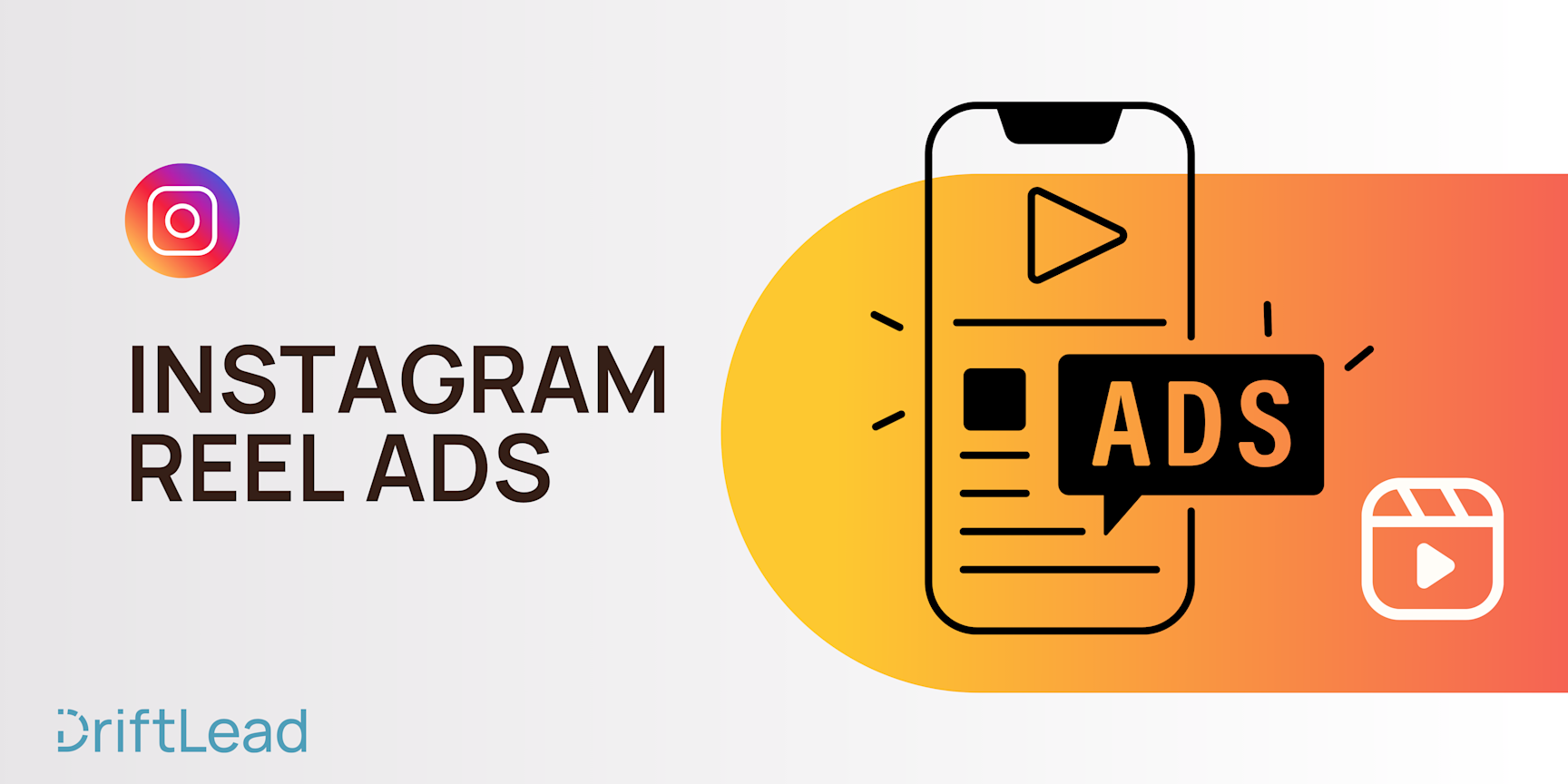How to Use Affinity Audiences in Google Ads - A Complete Guide
12 Oct, 2023
Dive deep into leveraging Affinity Audiences in Google Ads with our comprehensive guide. Discover strategies, optimizations, and best practices to supercharge your campaigns and connect with your ideal customers.

Jump to:
#ppc
Hop on our weekly newsletter train! We're sharing tips so stellar, we're practically job-threatening ourselves!
Alright, marketers, gather 'round! 📣 Have you ever found yourself watching those oddly satisfying pottery videos on YouTube or diving deep into the world of extreme ironing (yes, it's a thing) only to later wonder, "Why am I seeing ads for artisanal clay and premium steam irons?" Welcome to the magic of Affinity Audiences, where Google plays matchmaker between your peculiar passions and advertisers who think, "Hey, you might just love what we've got!"
In our digital age, every click, like, and search is like a breadcrumb. Gather enough, and you've got a trail leading straight to the user's interests and hobbies. As marketers, understanding and leveraging these trails can be the difference between a campaign that's just 'meh' and one that's 'mega awesome.'
So, whether you’re a seasoned advertiser looking for a refresher or a newbie thinking, "Affini-what-now?" sit tight. We're about to dive deep into the world of Affinity Audiences in Google Ads and explore how they can supercharge your campaigns. Hold onto your digital hats (and maybe that artisanal clay)! 🎩🍶
What are Affinity Audiences in Google Ads?
Ah, Affinity Audiences. Let’s think of them as Google's way of playing digital detective. 🕵️♂️ While Sherlock Holmes might deduce your occupation from the mud on your shoes or the ink on your fingers, Google takes a look at your online behaviors and says, "I bet they're into gourmet cooking... and probably have a budding interest in space travel." A tad futuristic, but you get the drift.
In technical terms, Affinity Audiences are groups of users curated by Google based on their long-term habits, interests, and behaviors on the web. Instead of focusing on users who are currently searching for a product or service (like those actively googling "best hiking boots"), Affinity Audiences target users who've shown a consistent interest in a topic over time. So, if someone's been binge-watching cooking shows, reading food blogs, and following celebrity chefs for months, they might be bucketed into the "Foodie" Affinity Audience.
But it's not just about labeling users based on their past activities. It's about predicting future behavior. If our food-loving friend above suddenly searches for travel destinations, with the power of Affinity Audiences, travel agencies can show them ads for culinary tours in Italy or wine-tasting vacations in France. Bon appétit!
These audiences provide a goldmine for businesses. Instead of casting a wide net and hoping for the best, you're fishing in a pond where you already know the fish have a taste for your bait. 🎣🐟
How Affinity Audiences Work
Affinity Audiences are like the close-knit group at your local book club who know each other's reading preferences better than anyone else. Every month, they recommend books tailored to each member's taste, leading to many a satisfied reader. Google, the ever-watchful librarian, crafts these audiences by meticulously analyzing online behaviors.
Data Collection: Google observes user behavior across its vast network – from the pages you visit, to the videos you watch, and even the apps you use. No stone (or, in this case, cookie) is left unturned. 🍪
Pattern Recognition: It's not about one-off visits or searches. Google is keen on discerning patterns. So, if you watched a single gardening tutorial, that doesn't make you a gardening enthusiast. But frequent visits to gardening blogs, watching related videos, and using gardening apps? That’s a pattern Google wouldn’t miss.
Beyond Third-Party Cookies: You might think with third-party cookies going the way of the dodo, Affinity Audiences would lose their charm. Think again. While third-party cookies played a part in this data collection, Google also relies heavily on first-party data (like direct interactions with Google-owned products) and machine learning to infer interests and behaviors. So, even in our cookie-deprived future, Affinity Audiences aren't going anywhere.
Segmentation: Once Google has a grasp on users' behaviors, it sorts them into various audience categories. Whether it's "Travel Buffs," "Swimming Enthusiasts," or "Fitness Buffs," there's a category for nearly every interest out there.
Tailored Advertising: Here's where the magic happens. Advertisers can specifically target or exclude these audience categories, ensuring their ads are shown to the most relevant users. So, if you're advertising a new fitness wearable, targeting "Fitness Buffs" could give you a leg up.
Keep in mind that Google keeps user data anonymous and aggregated. So, while it knows someone loves sci-fi novels, it won't know who that someone is.
How to Use Affinity Audiences Strategically for Optimal Results
Navigating the world of affinity audiences can be much like entering a gourmet candy store. So many flavors to choose from! 🍬 But with the right strategies, you can ensure you're picking the treats that'll most delight your target market. Here's how:
Layer into Broad Match Campaigns
Broad match keywords, in their essence, cast a wide net. While this increases visibility, it can sometimes attract clicks that aren't particularly relevant. However, by layering these with affinity audiences, you add an element of specificity. This ensures that your ads using broad match terms are more likely to resonate with users who have a genuine interest in your offering.
Tailor your messaging
The beauty of understanding your audience's interests is that it allows for razor-sharp ad copy. Affinity audiences provide insights into what resonates with users. Knowing this, you can craft messages that speak directly to their passions, lifestyles, and needs. It's like having a cheat sheet to your audience's heart!
Seasonal Campaigns
Timing is everything. Aligning your campaigns with significant events or seasonal interests can yield better engagement. By tapping into the current buzz, be it a holiday (right around the corner, folks), sports event, or even a trending show, and aligning it with the interests of your affinity group, you can create highly relevant and timely campaigns.
Leverage Data for Content Marketing
Affinity audiences are not just for ad targeting; they're a goldmine for content ideas. Knowing what your audience is passionate about can guide content creation, ensuring you produce blogs, videos, or podcasts that they're eager to consume. Use data from your audiences to see who is most interested in your products or services, and then create content that they will love!
Optimize Landing Pages:
The user journey doesn't end with an ad click; it's just the beginning. Directing users from different affinity groups to tailored landing pages can enhance their post-click experience. It ensures that what they see post-click aligns with their interests and the ad's promise.
Upsell & Cross-sell
Understanding your audience's broad interests can be used for strategic product recommendations. Affinity data can indicate complementary products or services that a user might be interested in. This isn't just about selling more; it's about enhancing the user's experience with your brand.
Competitor Conquesting
Targeting users interested in similar brands or products can be a smart move. By coupling affinity audiences, like "Brand Loyalists," with competitor-related keywords, you place your brand as an alternative, capitalizing on the existing interest. It's the advertising version of "If you like that, you might love this!"
Exclusion
While inclusion can be great, exclusion can be just as powerful. Ensuring your ads don't show up for audiences that aren't relevant can save money and enhance campaign efficiency. By understanding who isn't a good fit, you ensure your message only reaches those who truly matter. After all—you don't want the guest list for your next gathering to be filled with party poopers.
Performance Analysis & Optimization
As we reiterate often in these posts, every campaign needs analysis and optimization. Setting up your campaigns and never checking back on them is like planting a garden and never watering it and then wondering why your roses aren't blooming. Every ad campaign, no matter how finely tuned at the outset, requires regular check-ins and adjustments. Let's break down the steps for keeping your affinity audience campaigns flourishing:
Dive Deep into Demographics: While affinity audiences give insights into users' interests, combining this with demographic data can give an even clearer picture. Are a particular age group or gender responding better? Adjust your bids and messaging accordingly. Think of it as tailoring your pitch to an audience — you wouldn’t tell Gen Z and Baby Boomers the same joke, would you?
Segment Your Data: To truly gauge the impact of your affinity audience targeting, segment your Google Ads data by audience. This way, you can directly compare the performance of users within your target affinity categories to those outside of it.
Check the Overlaps: Sometimes, users might fall into multiple affinity categories. Regularly review the Audience overlap report in Google Ads to ensure you're not over-bidding or sending mixed messages to such users.
Review Conversion Metrics: Clicks and impressions are lovely, but what really matters is if users are taking desired actions. Keep a keen eye on conversion rates and the cost per conversion for each audience. This ensures that you're not just generating interest but tangible results.
Refresh & Rotate Creative Assets: Even the most compelling ad can become stale if seen too many times. Regularly refresh and rotate your ad creatives to maintain user engagement. And while you're at it, consider testing new messages or designs specifically for high-performing affinity groups.
Adjust Bids Strategically: Use the data. If certain affinity groups are bringing in golden results, consider increasing your bids to capture more of that audience. Conversely, if an audience isn't performing up to mark, reduce the bids or reconsider targeting them.
Affinity Audiences & Automated Bidding
Welcome to the era of automation, where Google’s algorithms are akin to that clever barista who remembers your overly complex coffee order. Automated bidding can be a game-changer, but how does it mesh with affinity audiences? Let's break it down.
Firstly, it's essential to understand that when you activate automated bidding, Google takes the reins on setting the bid amount for each auction. The platform assesses a myriad of real-time signals, including device type, location, time of day, and yes, audience attributes. So, when you're using affinity audiences in conjunction with automated bidding, you're essentially giving Google more nuanced information about who your potential customers are.
But here's the thing: while automated bidding considers your set audience bid adjustments, it might not always strictly adhere to them. Think of your bid adjustments as guidelines. Google takes them into account but might override them if the algorithm perceives a different bid amount as potentially more profitable for your campaign.
Now, you might be wondering, "If automated bidding potentially disregards my bid adjustments, why bother setting them?" The beauty lies in the initial learning phase. By providing Google Ads with audience data and bid adjustments, you’re offering valuable signals that can guide the algorithm during the early stages of the learning process. It’s like offering training wheels to a beginner cyclist. Once they get the hang of it, they can pedal confidently on their own.
If you're using automated bidding and wish to optimize around audiences, consider the following:
Focus on High-Value Audiences: Highlight the affinity audiences that have historically brought in high-value conversions. This can guide the algorithm toward bidding more aggressively when users from these groups are in the auction.
Constantly Monitor Performance: Even with automation, don’t "set and forget." Regularly review the performance of different affinity audiences and make adjustments as necessary. It ensures you’re in tune with the shifting dynamics of your target demographics.
Feedback Loop: Automated bidding is continuously learning. If a particular affinity audience starts to perform exceptionally well (or poorly), your bidding strategy will adapt over time, emphasizing (or de-emphasizing) that audience segment.
Gradual Implementation: From Observation to Action
You wouldn't dive headfirst into a pool without first checking the water's depth, right? 🏊 Similarly, when it comes to affinity audiences in Google Ads, a gradual approach ensures that you’re making data-driven decisions, rather than taking wild leaps based on assumptions. Here’s how you can slowly and steadily immerse yourself:
Start with Observations: Before making any significant changes, begin by adding affinity audiences to your campaigns in "observation" mode. This doesn’t adjust your bids or targeting; instead, it allows you to monitor how these audiences perform without directly influencing the campaign.
Gather Insights: Over time, you'll gather enough data to analyze how these audiences interact with your ads. Are they more likely to convert? Do they have a higher average order value? Or, perhaps, they bounce off your landing page faster than a cat spotting a cucumber. 🐱🥒
Make Informed Adjustments: Based on your gathered insights, you can then set bid adjustments for the affinity audiences that show promise. For instance, if a particular audience has a conversion rate that's through the roof, you might decide to increase your bid for that audience, making your ads more competitive when they're in the auction.
Target or Exclude: Once you're confident in the data you've amassed, you can transition from merely observing to taking action. If an affinity audience consistently performs well, you can set your campaign to "target" mode for that audience, focusing your ad spend where it counts. Conversely, if an audience isn't yielding profitable results, don't be shy to exclude them from your campaign.
Periodic Re-evaluation: We don't mean to sound like a broken record, but the landscape is ever-changing. New competitors emerge, user behaviors shift, and market dynamics evolve. It's crucial to periodically revisit your audience settings and bid adjustments. What worked wonders six months ago might be lackluster now, so stay agile and adjust accordingly.
Cautions and Caveats
As you embark on this affinity journey, it's crucial to remember that while these audiences offer a treasure trove of possibilities, not every treasure is made of gold. Some might just be a shiny nickel. 🪙 Here are some cautionary notes and caveats to keep in mind:
Don't Over-Segment: It's easy to get carried away and start creating very niche audience segments. While it's tempting to aim for laser-focused targeting, overly narrow segments might lack the necessary volume to make a significant impact.
Beware of Overlapping Audiences: If you have multiple audiences, including broader categories and their subcategories, be aware that you might be competing against yourself. This can drive up your CPC unnecessarily.
Stay Updated with Privacy Regulations: With the global emphasis on data privacy, like the GDPR in Europe or CCPA in California, it's essential to be informed about how affinity audiences comply with these regulations. The digital advertising realm is dynamic, and what's acceptable today might be restricted tomorrow.
Evaluate Audience Relevance: Just because you can target an affinity doesn’t mean you should. Ensure that the audience is genuinely relevant to your offering. A mismatch can lead to wasted ad spend and confuse your potential customers.
Check Audience Size: While Google's tools will give you an estimated audience size, remember that this is just an estimate. If your audience size is too small, you might not get enough traction. Conversely, if it's too vast, your message might become diluted.
Balance Automation with Manual Oversight: While automation tools and algorithms are brilliant, they don't always possess the nuance and understanding of your brand that you do. Periodically review any automated suggestions or adjustments to ensure they align with your larger business goals.
To put it in the wise words of Spider-Man's Uncle Ben (and yes, we're taking a slight creative liberty here): "With great audience targeting power comes great responsibility." In the world of affinity audiences, it’s crucial to strike the right balance between chasing potential and maintaining relevance, ensuring you’re getting the best bang for your ad buck without veering off-brand. 🕸️🕷️🚀
Wrapping it Up: The Big Takeaways
So, after this whirlwind tour of affinity audiences in Google Ads, what's the final word? Well, first and foremost: Affinity audiences aren't just a snazzy feature to gloss over. They’re a powerful tool in your digital marketing arsenal, poised to drive both awareness and conversions when used strategically.
To reiterate the golden nuggets:
Affinity audiences allow for broader targeting based on users' long-term interests and habits.
They can be creatively leveraged to craft campaigns that resonate deeply with your target demographics.
Optimization and analysis are paramount. Always iterate, iterate, iterate.
Automated bidding and affinity audiences can play nicely together, but they require a harmonized approach.
Gradual implementation and continuous evaluation ensure you don’t throw your ad dollars into the abyss.
Tread with caution. As with all things marketing, there’s a fine line between strategic genius and over-complication.
But hey, if all this talk of audiences, optimization, and algorithms feels a tad overwhelming, we're here to lend a hand. Let's collaborate and find the best strategies tailored to your business. Want to take the plunge with affinity audiences or explore other groundbreaking tactics? Request a free marketing plan. We're all about results, and we’d love to help you hit your next big milestone! 🚀🎯📈






